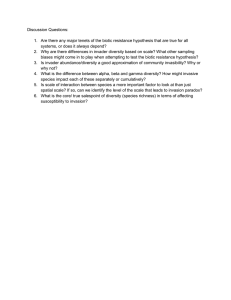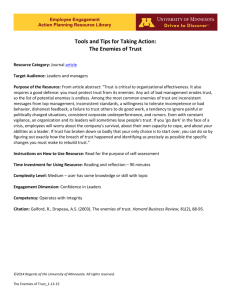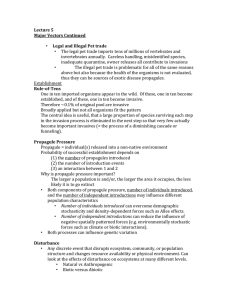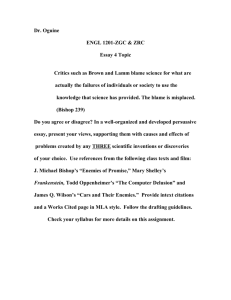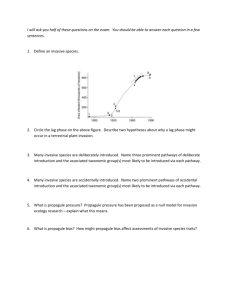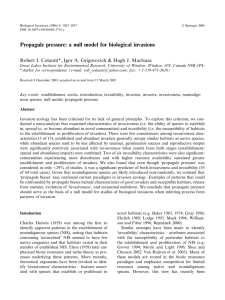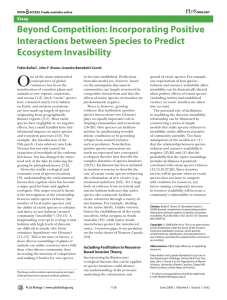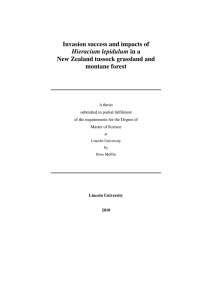Biotic Resistance ‘Biotic Resistance’ (e.g. Simberloff and Von Holle (1999) •
advertisement
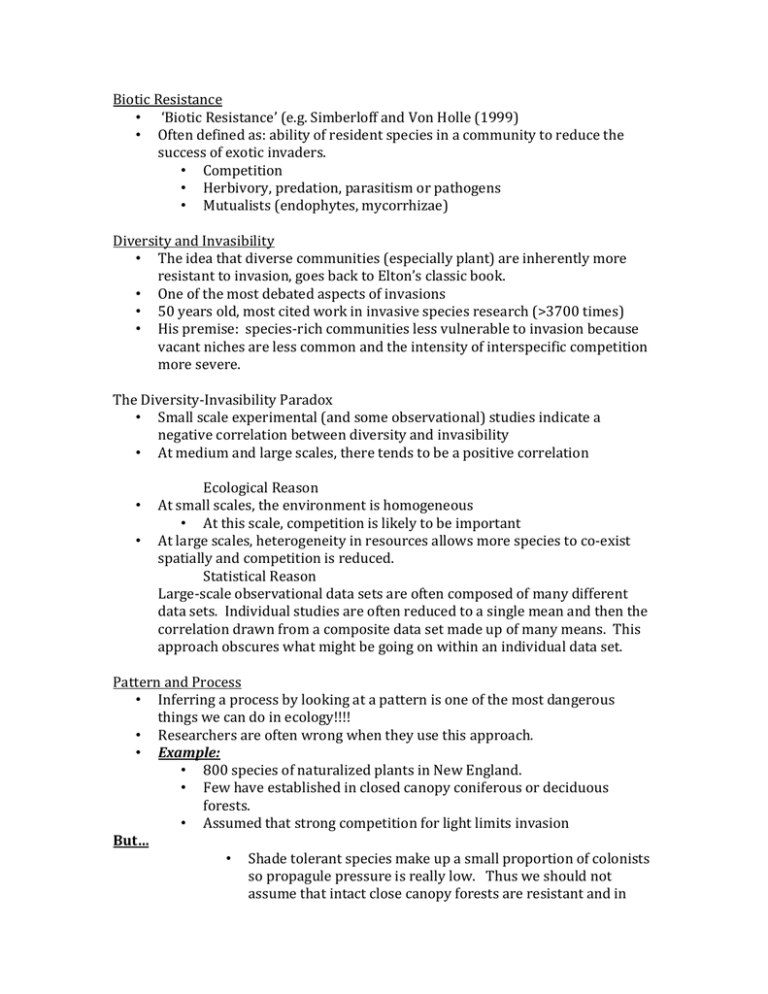
Biotic Resistance • ‘Biotic Resistance’ (e.g. Simberloff and Von Holle (1999) • Often defined as: ability of resident species in a community to reduce the success of exotic invaders. • Competition • Herbivory, predation, parasitism or pathogens • Mutualists (endophytes, mycorrhizae) Diversity and Invasibility • The idea that diverse communities (especially plant) are inherently more resistant to invasion, goes back to Elton’s classic book. • One of the most debated aspects of invasions • 50 years old, most cited work in invasive species research (>3700 times) • His premise: species-rich communities less vulnerable to invasion because vacant niches are less common and the intensity of interspecific competition more severe. The Diversity-Invasibility Paradox • Small scale experimental (and some observational) studies indicate a negative correlation between diversity and invasibility • At medium and large scales, there tends to be a positive correlation • • Ecological Reason At small scales, the environment is homogeneous • At this scale, competition is likely to be important At large scales, heterogeneity in resources allows more species to co-exist spatially and competition is reduced. Statistical Reason Large-scale observational data sets are often composed of many different data sets. Individual studies are often reduced to a single mean and then the correlation drawn from a composite data set made up of many means. This approach obscures what might be going on within an individual data set. Pattern and Process • Inferring a process by looking at a pattern is one of the most dangerous things we can do in ecology!!!! • Researchers are often wrong when they use this approach. • Example: • 800 species of naturalized plants in New England. • Few have established in closed canopy coniferous or deciduous forests. • Assumed that strong competition for light limits invasion But… • Shade tolerant species make up a small proportion of colonists so propagule pressure is really low. Thus we should not assume that intact close canopy forests are resistant and in fact, there have been a variety of successful recent invasions in this habitat. • • • Evidence to suggest that competition is important in determining the success of most exotics is very limited Many habitats with low numbers of invasives also have low propagule pressure. Enemy Release Hypothesis • ERH states: in new environments, plants will experience decreased regulation by herbivores and other natural enemies and thus should increase in abundance and distribution. • Three main premises 1. Natural enemies are important regulators of plant populations 2. Enemies have greater impact on native species than on exotics 3. Plants can capitalize on the reduction in enemies by growth / reproduction
